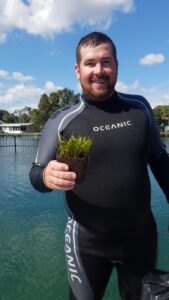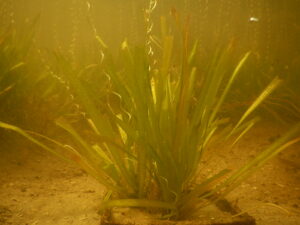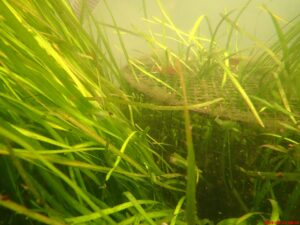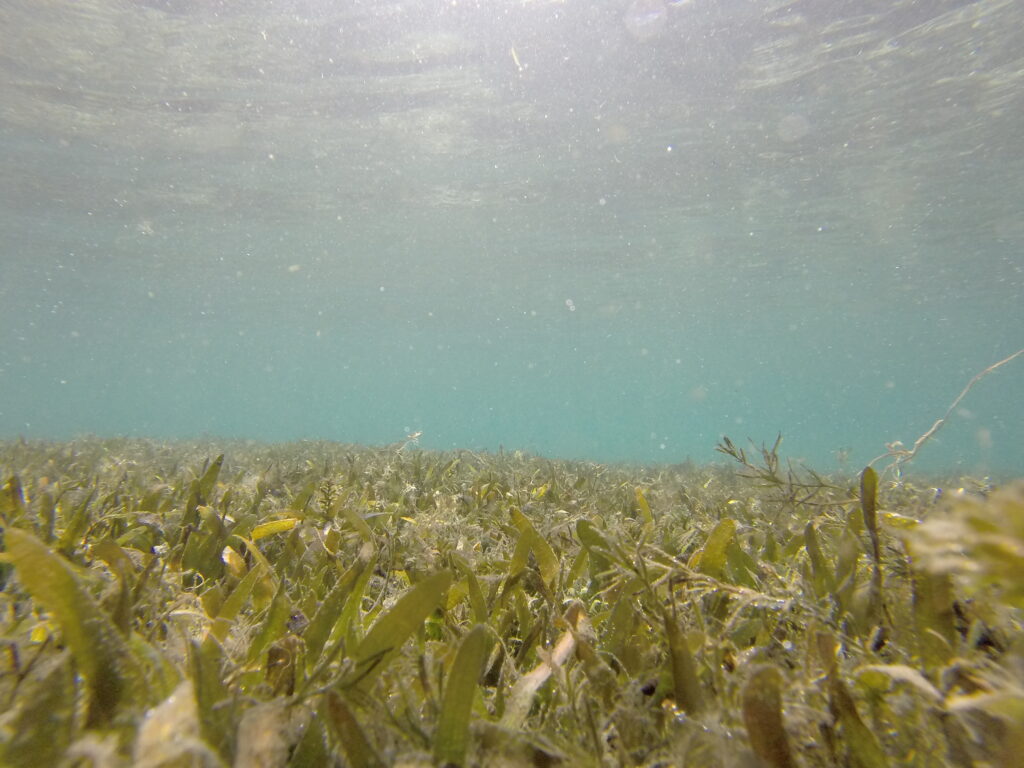Where do you get your grass?
When we restore the river, we use eelgrass to establish the base of the ecosystem. Vallisneria Americana or “eelgrass” is also known as tapegrass. And we buy it from companies that grow it in controlled conditions.

It’s critical when planting eelgrass not to take the grasses from one location and move them to another. We grow our grasses in nurseries or “mariculture” (marine agriculture) centers. This way we get grasses that are exactly the species we are looking for. We also can ensure that we’re not introducing other species into the river at the same time. Our grasses are clean and free from organic and biological contaminants. Learn more about our restoration process here.
Tracking our plants
We use grasses that are genetically tagged. Tape grass spreads both by putting out runners or rhizomes, that pop up and create new plants close to the parent, and by seeding. Many times mature plants put out flowers on long straight or corkscrew stems.

Female flowers float on the surface, going up and down with tidal action. Males release pollen, fertilizing the surface female flowers. The flowers release seeds to take root wherever tides and currents take them.
Hungry manatee sometimes pull up whole plants including the root. Being messy eaters, often plants will drift away from feeding manatee. Some plants will find their way to take root somewhere else.
Whether through runners, seeds, or being pulled loose, we can identify the unique genetic tag of all of the plants used to restore the river.
Would you like salt with that?

We select rapid growing species of eelgrass because we want the project to take effect as quickly as possible. The project selected “Rock Star” eelgrass for its ability to spread rapidly. Rapidly spreading grasses grow faster than manatee, turtles, and other creatures will be able to eat it. The faster we establish the grass, the faster it begins using nitrogen and phosphorous in the water, leaving water that is not a great habitat for the blue green cyanobacteria Lyngbya, which has take over our inland waters.
We learned that salt tolerance is another important characteristic of eelgrass. A second species called “Salty Dog” is cultivated for its ability to survive storm surges where inland waters become brackish during hurricanes and storm surges. We choose to grow and deploy Salty Dog along with Rock Star, so that we can get the best of both species.
What you can do

Our ecosystem depends on a sound base. Grasses provide the foundation of the restoration project. In the sands and mud below, worms and invertebrates have a home. Above the surface, the grasses leaves host small organisms that are the foundation of the food chain.
Learn more about grasses and their importance to a thriving ecosystem at these sites:
University of Florida Wetlands Plants (see submerged)
Let us know if you have questions about the grasses used in our restoration project. Send us your questions here.
